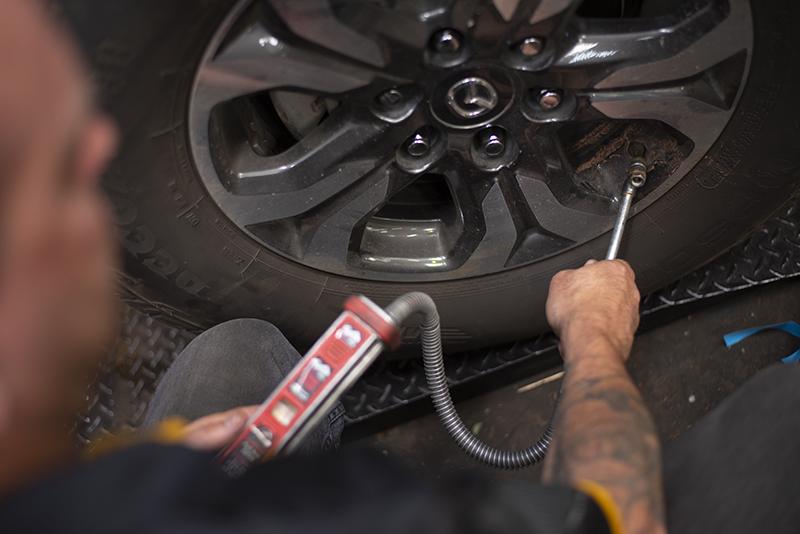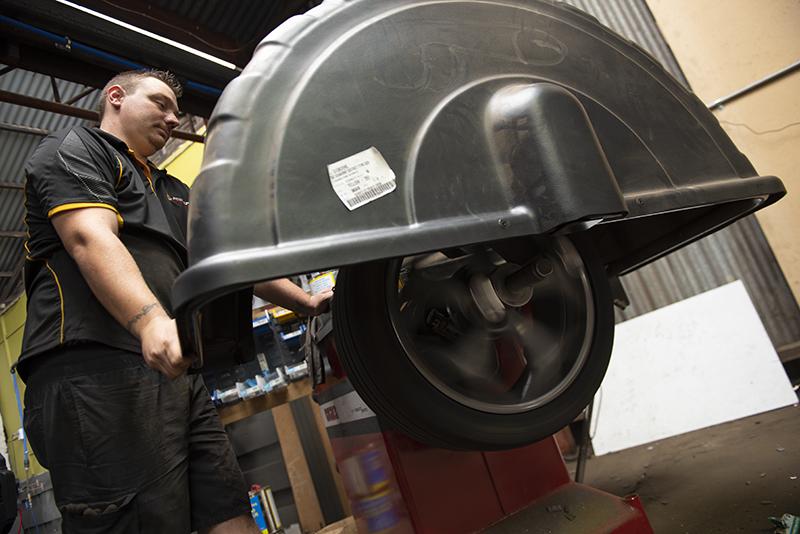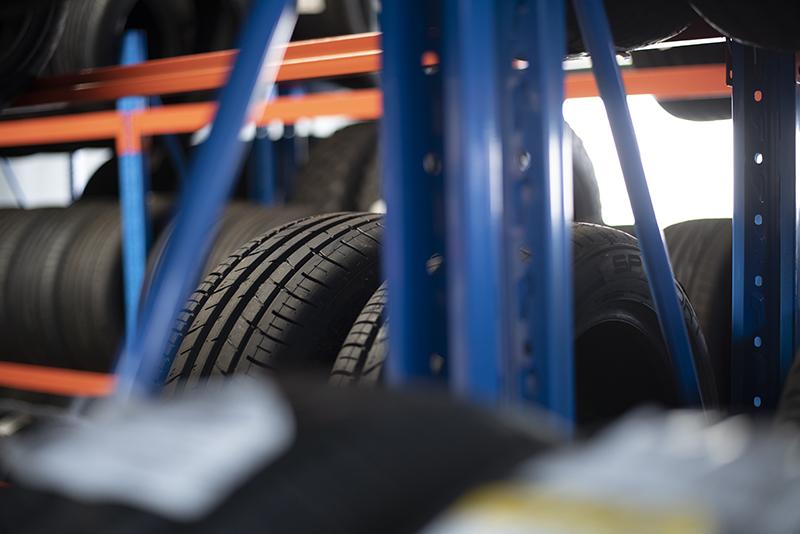Maintaining and caring for your tyres can save you a lot of money and help to keep you and other drivers you share the road with safe.
Inflation
If your tyres are overinflated, the centre of the tread is carrying the majority of the vehicle’s weight, which causes them to degrade faster, and creates uneven wear. Uneven wear of any kind reduces the lifespan of your tyres.
If your tyres are underinflated, they will wear quickly on the shoulders (outside edges) and generate excess heat, which also contributes to a reduced tyre lifespan.
You should check your air pressure at least once a month. To find the correct air pressure, check your owner’s manual, or look for a sticker on the driver’s doorjamb or in the glove box. If you buy tyres, be sure to learn the correct pressure from the seller.
If you have any questions don’t hesitate to ask one of our friendly staff.
Alignment and Balance
If your vehicle is out of alignment, it can lead to issues with your handling and steering, and uneven tyre wear. Aligning your vehicle involves checking your suspension and steering, and ensuring your tyre and wheel assemblies are straight and true.
If your tyres are unbalanced, you will experience road vibration, which can cause fatigue while driving, premature tyre wear, and increased strain on your vehicle’s suspension.
You should have your tyres balanced when first mounted, when they’re remounted after repairs, or if you notice wobble or vibration while driving, or if a year has passed since your last tyre balance.
If you have any questions don’t hesitate to ask one of our friendly staff.
Tyre Rotation
Your car’s weight isn’t evenly distributed amongst all four tyres. If you regularly rotate your tyres, you will get even wear on the treads, and they will last a lot longer.
There are many different methods of rotation. For most road vehicles, the rear tyres are moved to the drive axle and crossed to the opposite side, and the drive axle tyres are moved to the rear.
Check your owner’s manual for the recommended rotations for your vehicle. If there are no recommendations, we would say your tyres should be rotated every 10,000 to 12,000 kilometres, although 4WD vehicles may need them rotated more frequently.
If you have any questions don’t hesitate to ask one of our friendly staff.
Inspection
Checking your tyres frequently helps you discover punctures and other issues before they become too pronounced. The next time you’re checking your tyres’ air, look over the treads for nails, screws and other sharp objects that might have punctured your tyre. Even if the tyre is still inflated, these small punctures lead to cracks and pits which will reduce your tyre’s lifespan if left unchecked.
You should also check your treads for uneven wear as well. As mentioned earlier, wear around the edges indicates underinflation, and wear in the centre means overinflation.
Many tyres have treadwear indicators molded into the tread. If you see a solid bar of rubber across the width of the tread, it’s time to replace your tyre.
Repairs
It is paramount to know when you should repair a tyre and when it should be replaced. If your tyre deflates, it should be removed for a complete internal inspection to ensure it isn’t damaged. Driving on a flat tyre, even for a short distance, will usually damage them beyond repair.
Please always ensure your spare tyre is inflated to the proper pressure, and in good condition.
If you have any questions don’t hesitate to ask one of our friendly staff.




